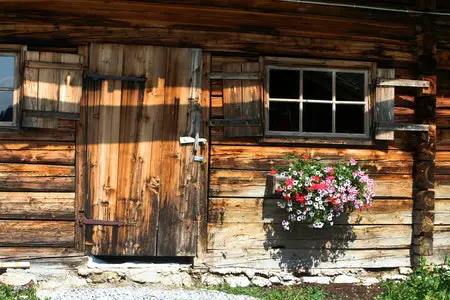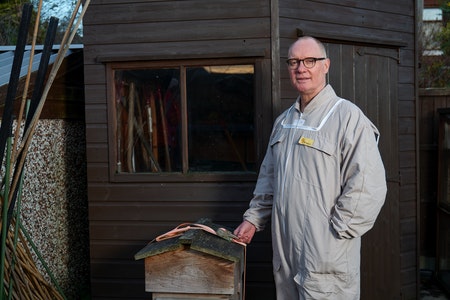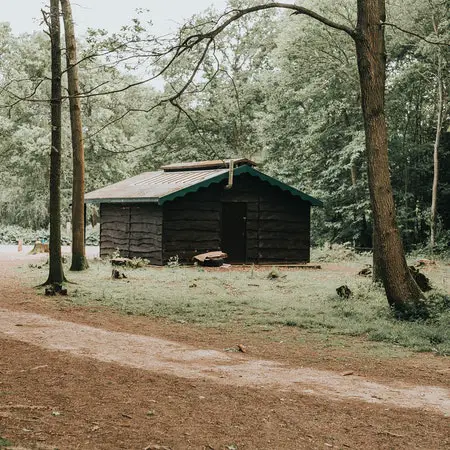Most sheds are usually used as a place for storing tools, keeping compost bins, or it may be even used as a workspace. Whatever it is you use it for, chances are that the shed is not insulated and therefore does not provide enough warmth in the winter months.

These sheds are often not insulated against cold and can affect you if you spend just a little time or many hours working in the shed and if you park your car or keep equipment that can not withstand excessive dips in temperature in the shed. Insulating the shed becomes more important when temperatures drop during the winter.
There are several ways to keep on an insulated shed warm. You could:
- Install a portable electric heater
- Use a mushroom heater
- Set up infrared heat bulbs
- Use a space heater in your shed
- Replace your roofing with transparent sheeting
The method you choose to heat your shed is highly dependent on what your shed is used for if the cold is nocturnal or seasonal, and how low the temperature dips in your locale. This article explains five different ways of keeping your shed warm when temperature dips to very low extremes and the night chill might make your shed unbearably cold for you to work in during the day
Installing a portable electric heater
Portable electric heaters are very common and are a rather convenient way to heat small spaces as most sheds do not have a lot of space. All you have to do is purchase a heater and plug it into a wall outlet after which you can then turn it on and adjust the heat level to the temperature that is best suited to you.
Most electric heaters are quite easy to operate and have buttons for increasing and reducing the heat. You can move the heater around to the position you feel is the best without much of a fuss as long as there is a wall outlet or the power cable is lengthy enough.
Last update on 2024-03-25 / Images from Amazon Product Advertising API
Be very careful about this positioning and make sure to avoid any irregular surfaces in your shed. This is due to the risk of fire outbreak due to the heat emanating from it if it were to fall over and come in contact with other objects which it could potentially set on fire.
Also, ensure that your portable electric heater is not too close to the walls of your shed or any other surfaces that may be sensitive to the heat. Carefully check for any recommendations by the manufacturer regarding safety while using the portable electric heater before making your purchase.
Installing a mushroom heater
Mushroom heaters get their name from their characteristic look due to the metal at the top having a shape similar to that of a mushroom head, they are also known as patio or heaters or umbrella heaters due to their popularity from being used in the outdoors.
Mushroom heaters are usually powered by fuel of some sort either butane, propane, or petroleum gas that is dispensed from a tank that is either inbuilt or separate from the main body. These mushroom heaters have a burner atop a pole whose main function is to direct heat towards a perforated metal screen that is shaped like a cylinder.
Last update on 2024-03-25 / Images from Amazon Product Advertising API
The mushroom screen at the top has a silver livery allowing it to reflect heat that then warms the surrounding areas.
These mushroom heaters are very portable and many come fitted security stands and tiny wheels to allow for easy mobility, same as with any heaters the generated heat poses a fire risk if not handled carefully and should be placed a minimum of three feet away from you and any surfaces in your shed.
Infrared heat bulbs
Infrared heat bulbs are commonly used by chicken farmers to brood chicks and keep them warm when they first hatch. Installing infrared heat bulbs in your shed works the same way.
The only thing you need to do is replace the bulb you already use for lighting with an infrared heat bulb and it goes ahead to create a sauna effect. This method is ideal for mild temperature dips but is not the best way to warm your shed in extreme winter temperatures.
Last update on 2024-03-25 / Images from Amazon Product Advertising API
With that said, using infrared bulbs in a shed is very convenient as you only need to warm your shed while you’re around. These infrared bulbs produce more heat than the average light bulb which is why they are capable of being used as a heat source and they are also very easy to install.
Space heaters
Space heaters are best if your shed is quite large, if your shed serves as a workshop space heaters are an excellent option as they are a perfect fit for large spaces.
This is due to space heaters discharging a lot of heated air, this makes it imperative that they are kept at a safe distance away from other objects especially objects that are highly inflammable.
Space heaters can be powered by a variety of methods ranging from the use of combustible fuels like wood pellets, natural gas, furnace oil, propane, or butane to the use of electrical power from the nearest outlet. Portable and mobile space heaters are available that are suited for use in the smaller sheds are available and are powered by electricity to offer better safety and less risk.

Whatever source of power is used to keep your space heater up and running does not matter when it comes to adhering to safety guidelines for the use of your heater. You should always ensure you take the necessary precaution to ensure the continued safety of both yourself and your immediate environment when warming your shed.
Flammable objects should be kept at a minimum of three feet away from a space heater and the same distance applies to walls and other equipment.
Space heaters should also not be left unattended while in use.
Research undertaken in 2018 (1) showed that over fifty thousand fires between 2012 and 2016 that were responded to by various local fire departments involved heaters and 44% of these incidences of fire outbreaks were caused by space heaters.
Adapting your roofing for natural solar heat
This method is perfect for sunny seasons and regions but is ineffectual for preventing temperature dips at night. In this case, it might still be necessary to make use of another heating method like installing a portable heater or any other method that makes use of electricity or natural gas.

This method involves making use of the natural heat provided by the sun during the day by replacing your current roofing with transparent roofing. This lets in both natural light and the sun’s heat simultaneously. To get the best out of this method ensure that the clear sheeting is used of the side of the roofing that receives the most sunlight at noon when the sun is at its highest and hottest
Guidelines for safety and best practices while heating a shed without insulation
It is of utmost importance that safety precautions and guidelines are followed when heating your shed and the rules are put in place to ensure your safety, prevent unnecessary waste of energy and avoid fire accidents saving you money in the process.
A few of these guidelines are concerned with energy conservation and the use of renewable energy technology.
These guidelines state that when procuring and using heaters you should:
- Avoid purchasing older heater models as they may not have the latest safety features and ensure any heater you buy has the Underwriter’s Laboratory (UL) label.
- To avoid wasting energy choose a thermostat-controlled heater. This also prevents overheating.
- Purchase a heater that is the right size for the room you are heating. There is a general sizing table that comes with most heaters to guide you with this.
- Ensure to keep the heater away from places with foot traffic and make sure you do not place in an area house pets and children have access to.
Remember at all times that when you’re heating an uninsulated shed heat is easily lost to cold air from your surroundings. Due to this your shed should only be heated when in use to avoid any unnecessary waste of energy and/or money. It is better to pick a heating method that is best for your current heating need in any situation.
Heating an uninsulated shed is an absolute necessity if you are using it in whatever capacity either as a workshop, storage space, or a workshop, and the importance of this only becomes more pronounced during the winter.
Heating your uninsulated sheds during the months with sunny days and cold nights can be easily accomplished with the installation of infrared bulbs or transparent roofing sheets that let the sun through. These heating methods may not be enough in colder regions or during winter with extreme temperature dips and you might require more powerful heating solutions like mushroom heaters, space heaters, and electric heaters.
Never forget to adhere to the necessary precautions, energy-saving tips, and guidelines for using these heating solutions. To prevent fire outbreaks, keep heaters a safe distance away (about 3 feet) from walls or objects and ensure they are on smooth flat surfaces so they don’t fall over.



